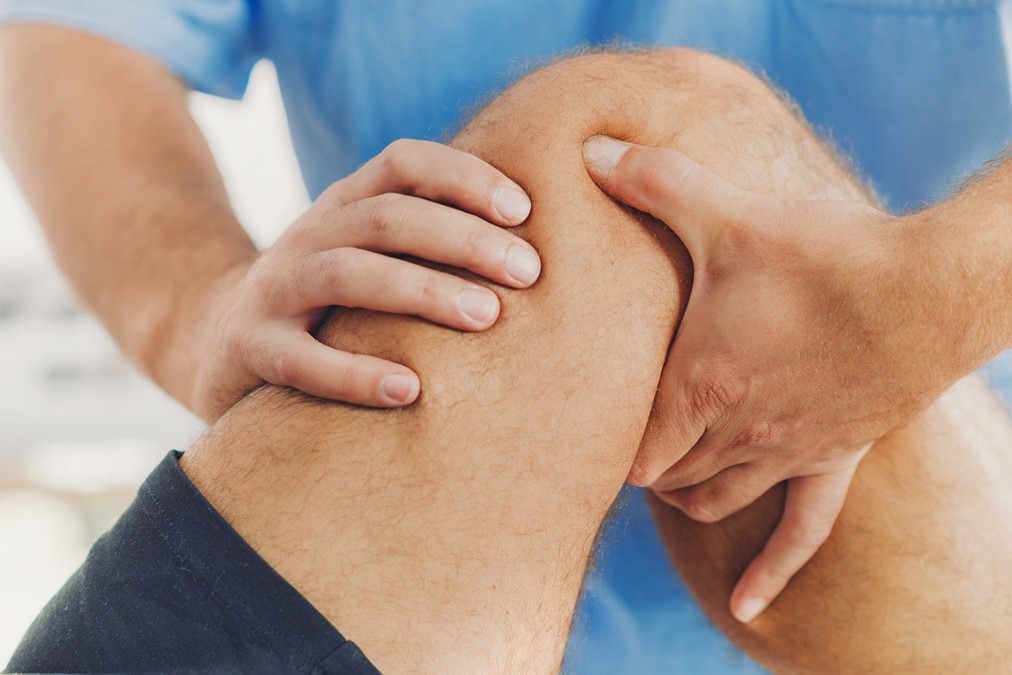
Anterior cruciate ligament injury: symptoms, diagnosis and treatment
Anterior cruciate ligament injury is common in adolescents, especially following severe distortive knee trauma during sports activities
The anterior cruciate ligament is one of the most important structures within the knee joint
This ligament is a major contributor to joint stability.
Within the knee joint, the anterior cruciate ligament connects the lower end of the femur with the upper end of the tibia.
The anterior cruciate ligament prevents the knee from overextending and the tibia from exaggeratedly rotating inward.
Rupture or tear of the anterior cruciate ligament is a serious injury to the knee, which becomes unstable, with limitation of its function.
Anterior cruciate ligament rupture is common in adolescents, especially as a result of severe distortive knee trauma during sports activities.
Girls who participate in sports at high risk of injury have an even higher incidence than boys.
At the time of injury, the patient complains of pain and reports a “cracking” sensation.
The knee swells, due to joint effusion.
The patient reports a feeling of joint failure, as the knee is no longer stable.
Anterior cruciate ligament rupture may be associated with injuries to the meniscus, articular cartilage, and other ligaments of the knee (posterior cruciate ligament, collateral ligaments).
Diagnosis is made through the collection of the medical history, delving very carefully into the pattern of injury, and through a thorough examination.
The diagnosis needs to be confirmed with MRI, which allows the assessment of the damage to the anterior cruciate ligament and highlights additional injuries at the level of other joint structures.
Anterior cruciate ligament injuries do not heal spontaneously and, if left untreated, make the knee unstable
This instability, over the years, may be responsible for other joint injuries (menisci, cartilage) and to the progressive development of osteoarthritis.
Conservative treatment aims at pain reduction, joint recovery, and muscle strengthening in preparation for surgical treatment, which is almost always necessary.
Surgical treatment consists of reconstruction of the anterior cruciate ligament using a tendon from the same patient.
Part of the patellar tendon, part of the quadriceps tendon, or the semitendinosus and gracilis tendons may be used to replace the cruciate ligament.
Surgery is performed arthroscopically
To prevent the occurrence of meniscus and cartilage injuries and in order to allow the adolescent to fully return to sports activities, anterior cruciate ligament reconstruction is a recommended surgical procedure.
However, the adolescent patient often has not completed his or her skeletal growth, and his or her bones are still composed, at least in part, of growth cartilage, which could be damaged by the surgical procedures required for ACL reconstruction.
There are, at present, surgical techniques for preserving growth cartilage in patients who have not yet completed skeletal growth.
However, in the adolescent patient, the choice of reconstructing an anterior cruciate ligament or waiting for full skeletal growth must be evaluated on a case-by-case basis.
As with meniscal injury prevention, to prevent anterior cruciate ligament rupture, it is necessary to engage in strenuous sports activities only after achieving good athletic training, which is essential to reduce the risk of serious knee injury.
The prognosis of conservative treatment is good, but only if the patient agrees to limit his or her sports activities.
Surgical techniques to reconstruct the anterior cruciate ligament allow the patient to resume pre-injury sports activities.
An appropriate postoperative rehabilitation program is a key part of the treatment.
Read Also
Emergency Live Even More…Live: Download The New Free App Of Your Newspaper For IOS And Android
Knee Pathologies: Patellofemoral Syndrome
Meniscus, How Do You Deal With Meniscal Injuries?
Meniscus Injury: Symptoms, Treatment And Recovery Time
First Aid: Treatment For ACL (Anterior Cruciate Ligament) Tears
First Aid For Knee Pain And Injury
Wrist Fracture: How To Recognise And Treat It
Carpal Tunnel Syndrome: Diagnosis And Treatment
Knee Ligament Rupture: Symptoms And Causes
Lateral Knee Pain? Could Be Iliotibial Band Syndrome
Knee Sprains And Meniscal Injuries: How To Treat Them?
Treating Injuries: When Do I Need A Knee Brace?
Everything You Need To Know About Fibromyalgia
Knee Cartilage Damage: What It Is And How To Treat It
First Aid For Sprains: When To Use Ice Or Heat
Anterior Cruciate Ligament Injury: Symptoms, Diagnosis And Treatment
Wrist Fracture: How To Recognise And Treat It
How To Put On Elbow And Knee Bandages
Meniscus Injury: Symptoms, Treatment And Recovery Time


